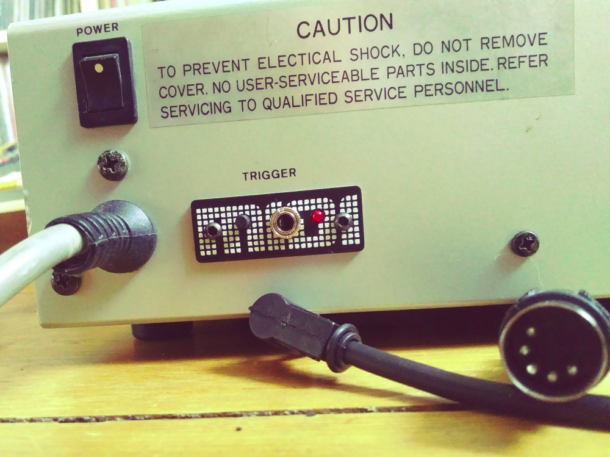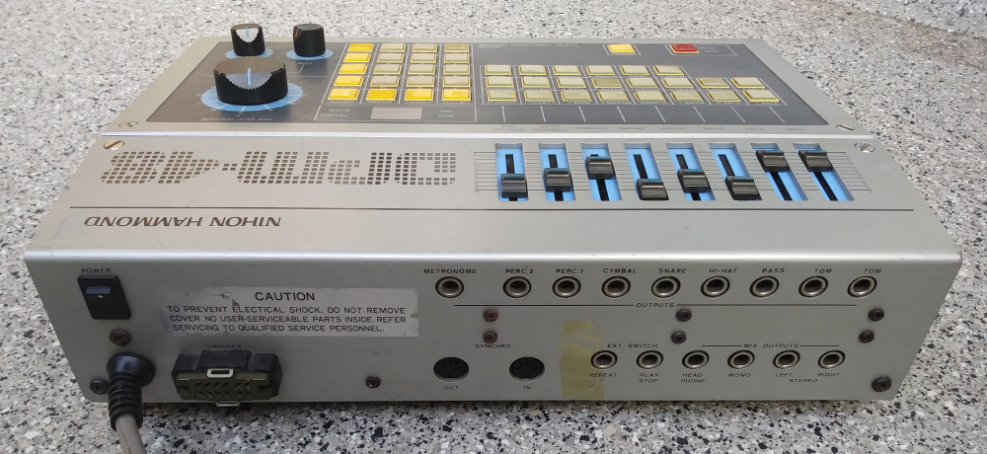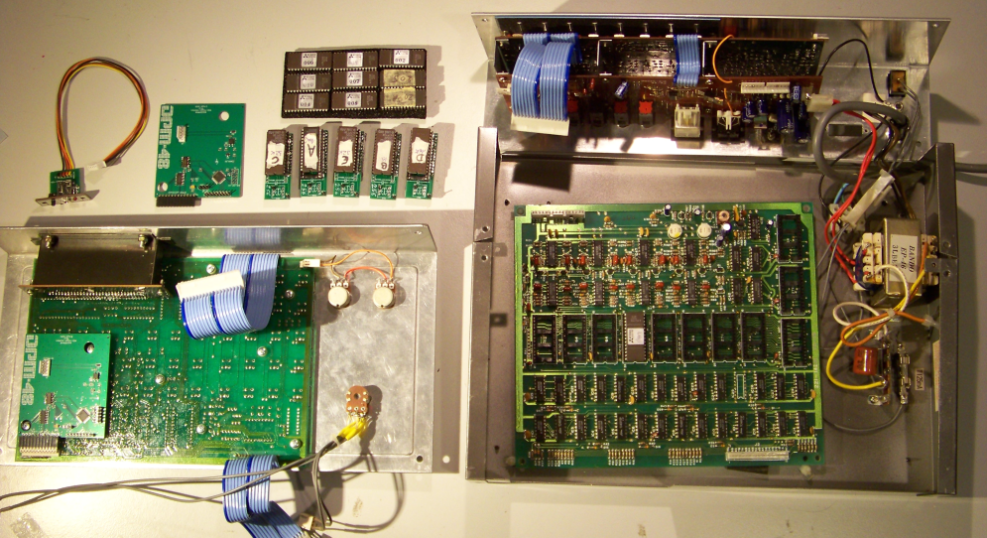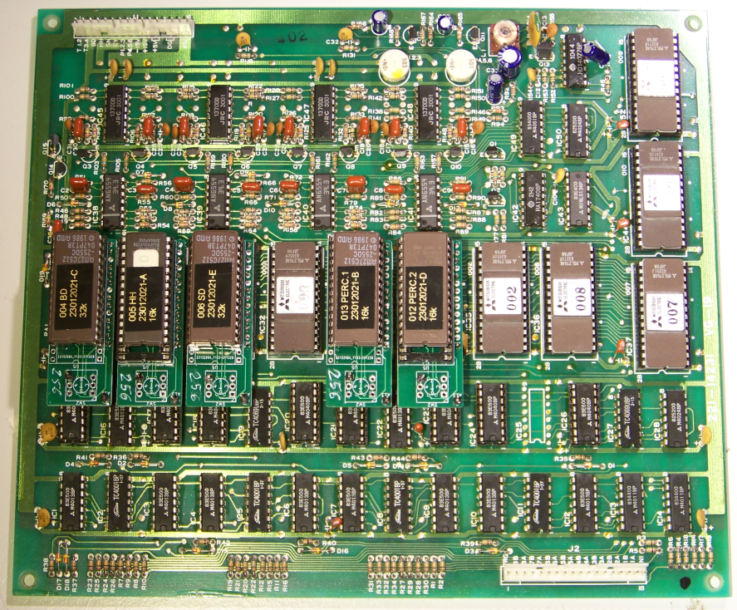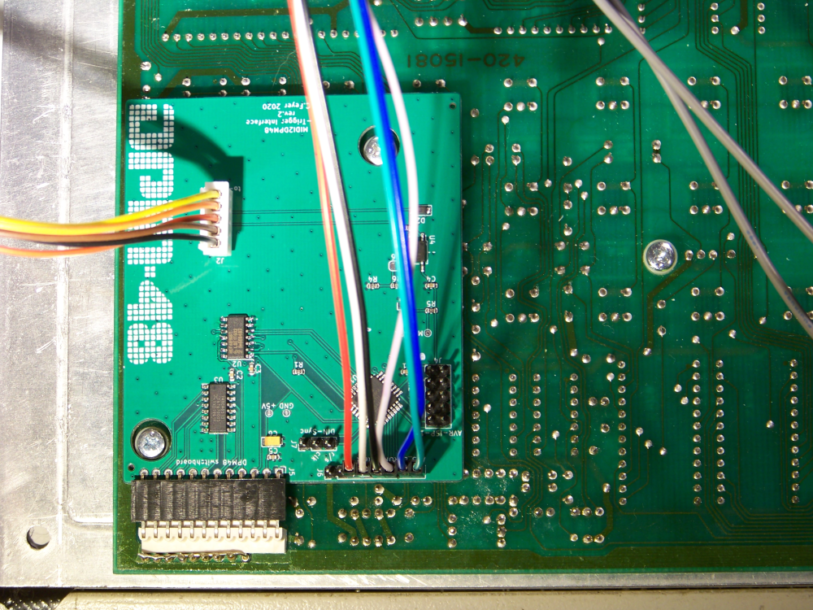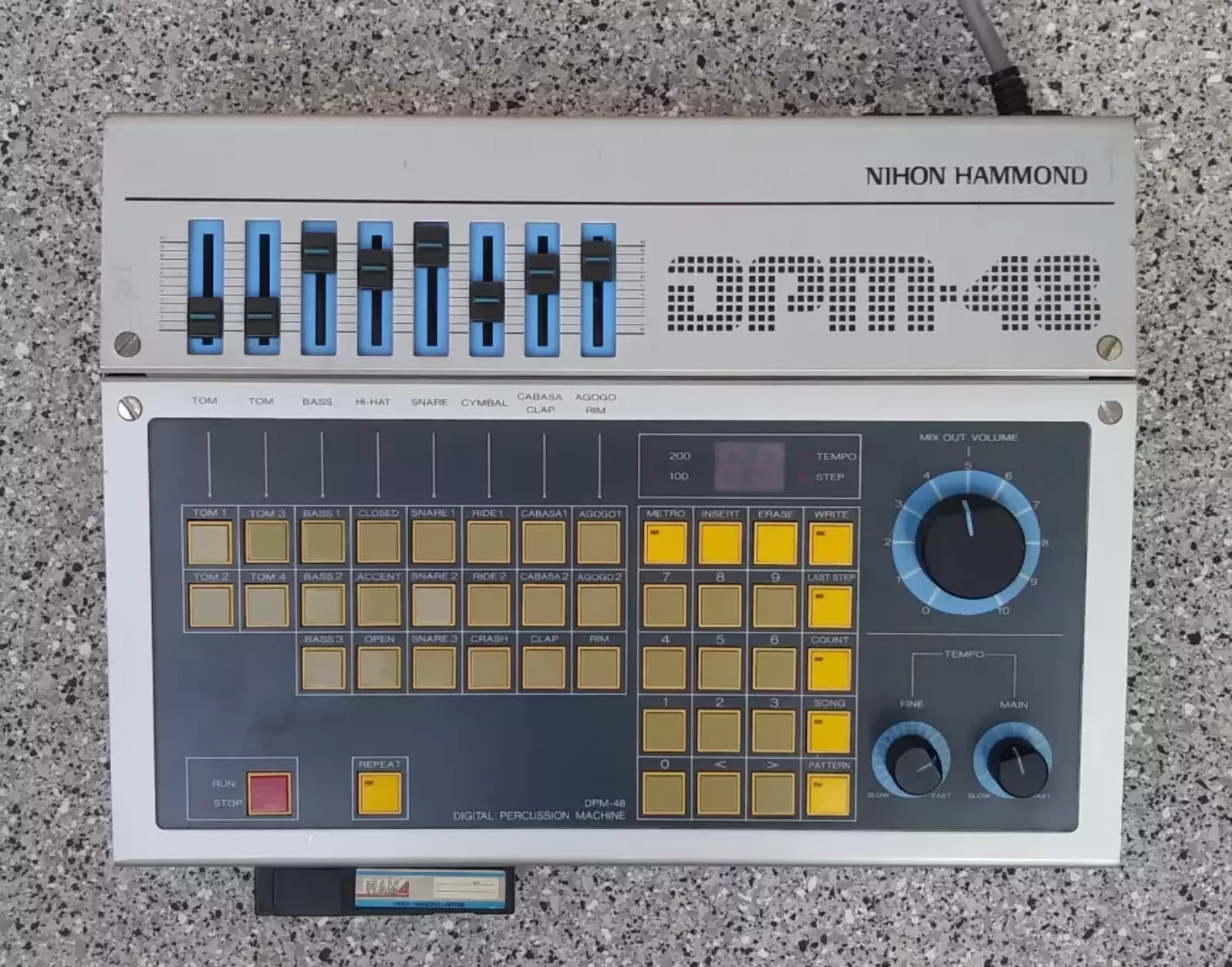
MIDI-Interface for DPM-48 Drum-Machine
No RAM cassette? - No problem with this MIDI trigger interface for the DPM48. In addition, more custom samples can be played back
For the drum machine DPM-48 (“Digital Percussion Machine”), developed in 1984 by the Japanese manufacturer Sakata and distributed in Germany by Hammond under its own brand, an interface was to be developed that would enable the digital drum sounds stored in the machine on EPROM memory to be controlled via any MIDI-capable device.The background for the development is the limitation of the device to create and play sequences only with an inserted (optional) RAM cassette. Another possibility to control the sounds, besides the buttons on the control panel, is a so-called trigger interface. This offered the connection of an optionally available interface for the use of drum pads in addition to a real drum kit. In addition, a circuit was to be developed that would allow the factory sounds to be expanded. The selection of these extended sounds was also to be done via MIDI.
Requirements for the MIDI interface
The MIDI interface to be developed is to replace the trigger socket on the back. In its place, a front panel with the MIDI connection and a user interface consisting of an LED and a button is to be attached to a UI board. This will be connected to the MIDI interface board via a multi-core cable. The MIDI interface board, which contains the microcontroller and the peripherals, is to be plugged into the microprocessor board of the DPM-48 instead of the multi-core cable of the removed trigger socket.For space reasons, the MIDI input is designed as a 3.5 mm TRS mini jack and shall use the MIDI-TRS Type A standard.The interface shall replace the eight trigger inputs and be able to control all 22 sounds via MIDI messages from MIDI-compatible devices. The MIDI channel shall be learnable via the button. In addition, the interface shall allow MIDI-controlled selection of extended sound banks in selected groups. The interface shall be able to be installed without altering or damaging the unit.

Sound data and extended sound banks
The DPM-48 drum machine uses 8-bit unsigned PCM (pulse code modulation) as audio format to play back the stored sounds. The samples of the drum and percussion sounds are stored on eleven 8 KiByte (8192 bit) EPROMs of type 2764.For analysis, the individual EPROMs were taken out of the drum machine and read into the PC with an EPROM programmer. The individual samples are between 2 KiByte, 4 KiByte and 16 KiByte in size. With the sampling rate of 20 kHz used, this results in sample lengths between approx. 102 ms, 204 ms and 819 ms. The two TOM groups are sampled at 10 kHz and result in approximately 409 ms long sounds.The figure below shows the imported data of each EPROM in an audio editor.Each group has an 8-bit DAC (digital-to-analogue converter) consisting of operational amplifiers in an inverting summing circuit with subsequent re-inverting. Subsequently, each group has a VCA that is opened by an analogue envelope. The envelope is used for some identical samples with different intensity (e.g. for SNARE 1 and SNARE 2 and for RIDE 1 and RIDE 2).
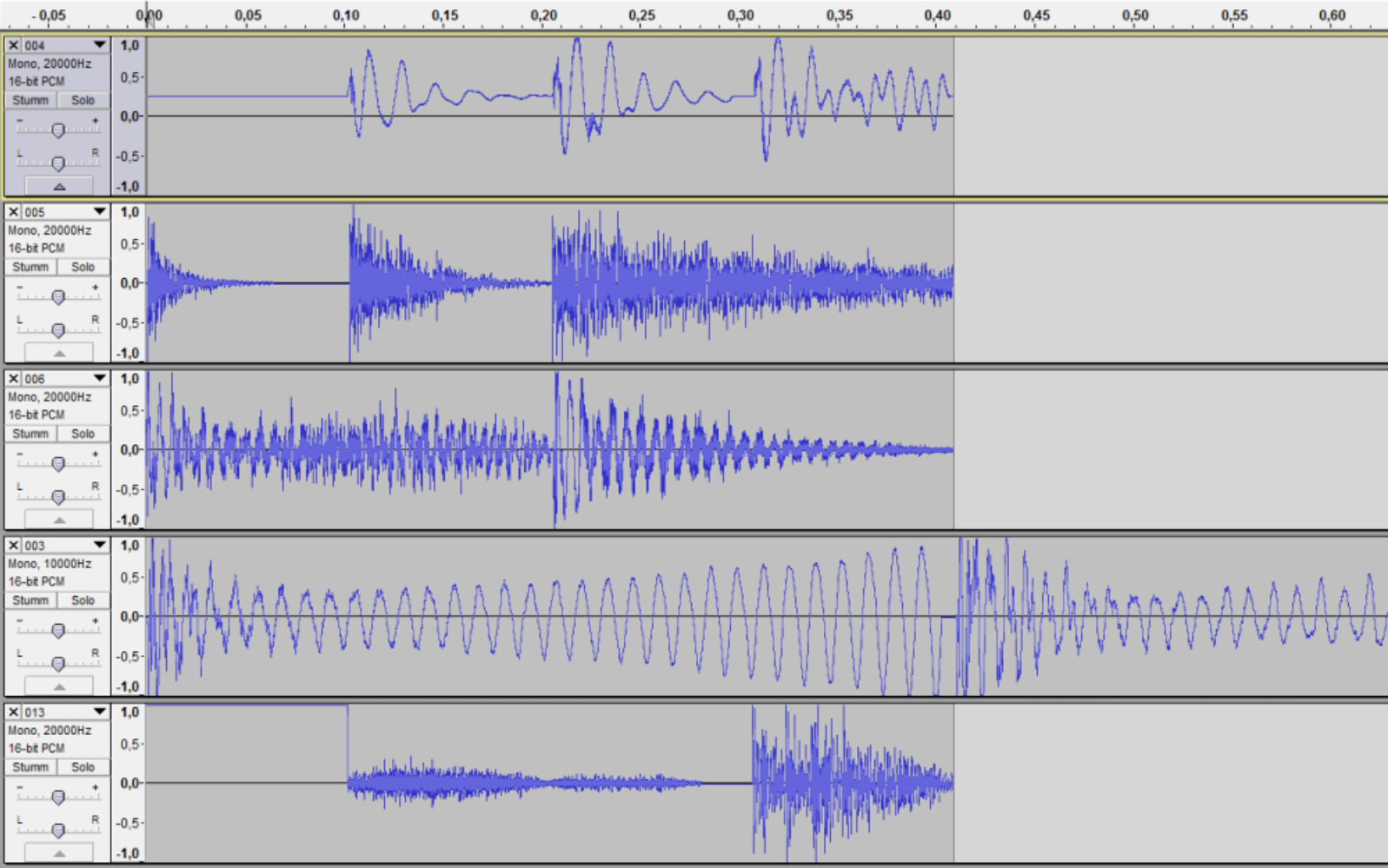
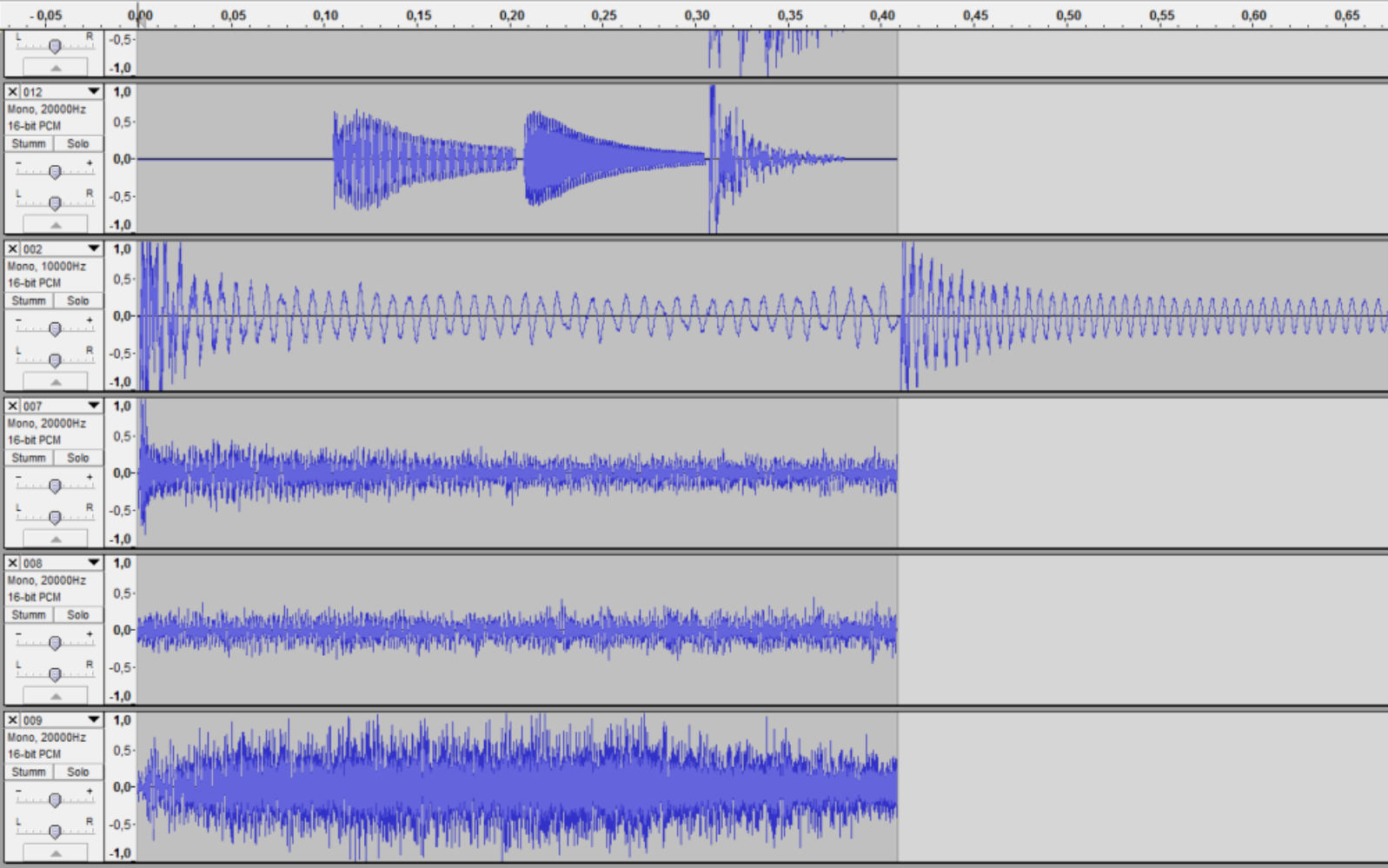
To expand the sound banks, new data was created for selected EPROMs. The arrangement of the data is according to the original data. EPROMS with two and four sound banks were prepared. The lowest 8 KiByte block in the memory of the respective EPROM contains the original data of the EPROM of the respective group. New samples are arranged in the next higher block or blocks. In the case of the digital drum machines (Linn LM-1 and 9000, Oberheim DMX and DX and Sequential Circuits Drumtraks), the data for this comes from their EPROM data and was converted from the companded (mu-law) data format to 8-bit unsigned PCM. The samples of the analogue drum machines (Roland TR-606, TR-808, TR-909) were imported as .wav files, cut and converted.The figure shows the new arrangement in the memory of the 16 or 32 KiByte EPROMs. For the groups “HI-HAT”, “PERCUSSION 1” and “PERCUSSION 2” another bank was created, for the groups “BASS” and “SNARE” three more banks were created.
The data was burnt onto EPROMs of type 27128 or 27256 with the programmer and the viewing windows were taped shut with lightproof labels to prevent accidental erasure. The EPROMs were inserted into five prepared adapter boards.
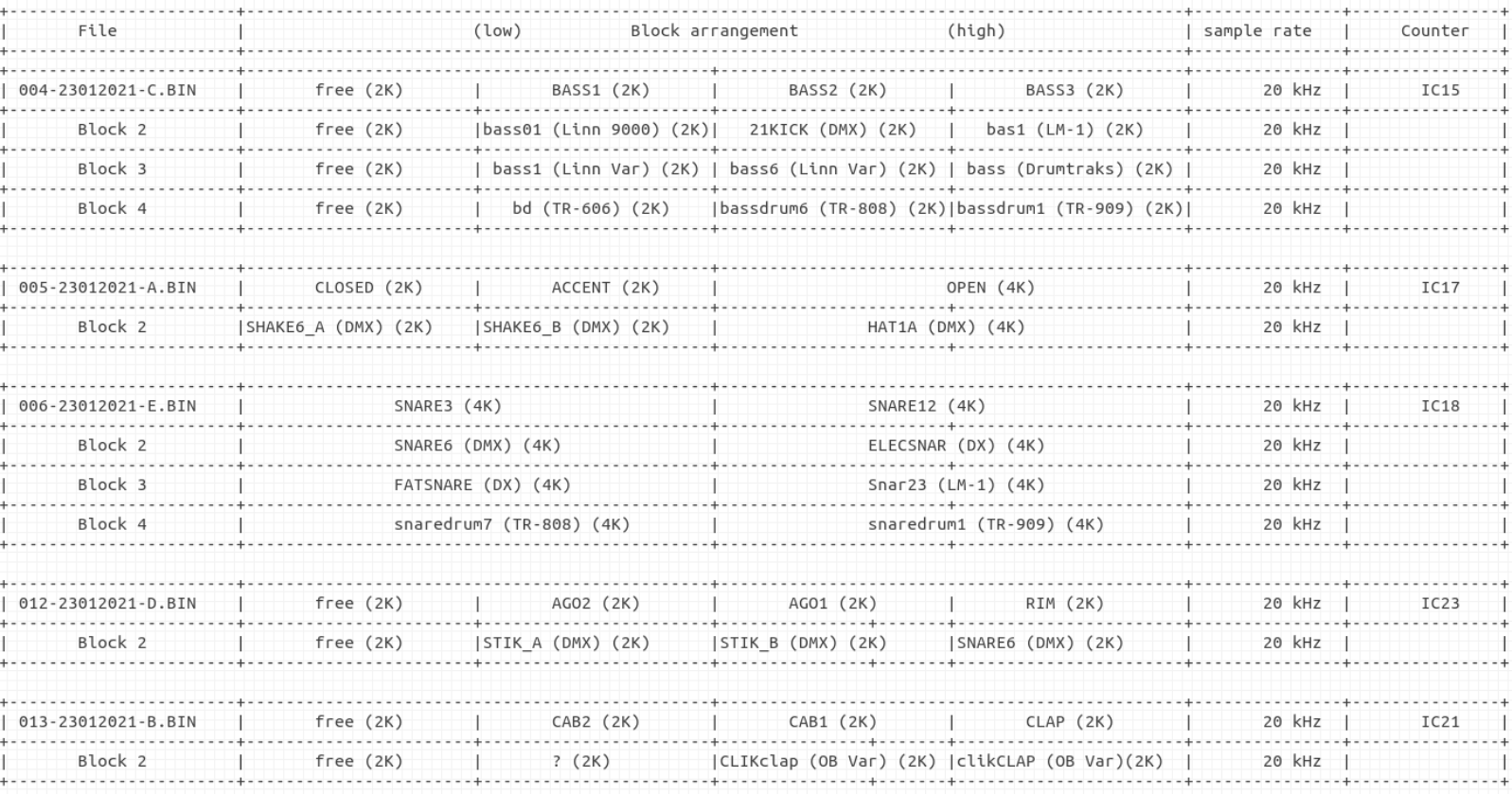

Installation of the interface and sound extensions
The assembled and tested boards were then installed in the DPM-48. After opening the unit and disconnecting the ribbon cables, the lid, back and bottom were separated. The trigger socket at the back was removed and the MIDI/UI board with the front panel was installed in its place. The EPROMS of the groups that were to receive an extension of the sound bank were removed and replaced by the adapter boards. The interface board was plugged onto the white 12-pin header of the DPM-48 processor board and secured on the underside with double-sided foam tape. The five-wire cable to the MIDI/UI board was plugged into J2 and the A13 and A14 connections of the EPROM adapter boards were connected to J6 and J7 according to the configuration of the firmware.
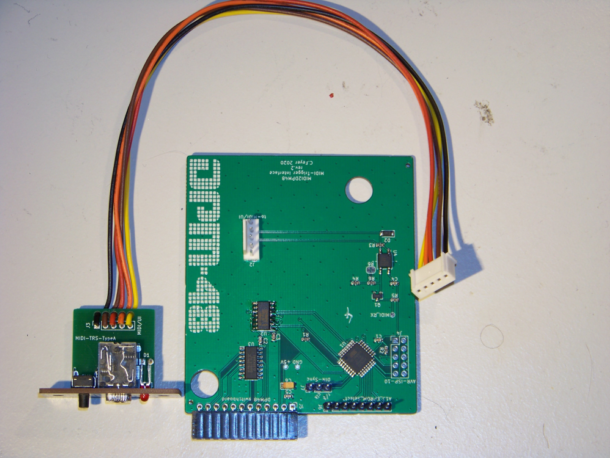
Once the MIDI interface has been installed in the DPM-48 drum machine, the individual sounds can be triggered via a connected MIDI keyboard, starting at note C0. In the higher octaves at note C2, C4 or C6, the extended sound banks can be played. The learning mode for the MIDI channel works as desired. In another test, a MIDI sequencer was used to control the sounds in the DPM-48 on several tracks. Even at higher tempo and many simultaneous notes, the interface works as desired.
The interface can be installed without any changes or damage to the unit. All interventions are reversible.
By installing the MIDI interface, the limitations of the DPM-48 can be circumvented. In addition, the sound palette is enlarged by extending the sound banks.
